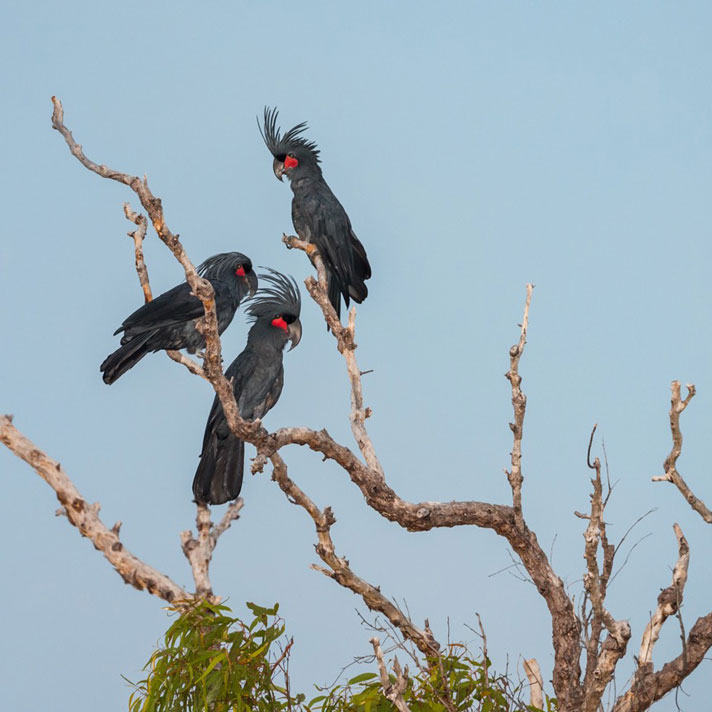Photo: JJ Harrison
Conservation and tool use in palm cockatoos
Palm cockatoos are large, charismatic and emblematic birds of northern Australia and New Guinea yet our research suggests they are in steep decline. We study the demography and dynamics of the entire population on Cape York Peninsula and the causes of their decline including large scale habitat loss from mining, changed fire regimes and low reproductive success.
Palm cockatoos are the only non-human species that manufactures and uses a sound tool. The males make drumsticks by breaking off a branch, stripping the foliage and trimming to appropriate length. They then grasp the drumsticks in one foot and beat them against a hollow trunk as part of their display to females. Our project explores this remarkable behaviour and the aspects of intelligence required to make and use tools in such a human-like fashion.
Why it’s difficult
Palm cockatoos are found in remote parts of Cape York Peninsula 10-20 hours drive north of Cairns. They only occur in the small bands of woodland adjacent to rainforest. They are shy and elusive and all but impossible to catch, necessitating alternative methods for studying them, and lots of patience! Only by understanding their movements and behaviour intimately have we been able to approach, observe and gain precious DNA samples for population genetic analysis. We climb the trees when safe but use cameras mounted on tall poles to see inside the nests when the wood is too old or rotten to support our weight.
What we’re doing
Conservation biology
Members of our team have been researching this species since 1999. The initial emphasis was on breeding biology and ecology of palm cockatoos in the rainforests of the north east coast. This population was shown to be in steep decline due to very low rates of reproduction. Females were shown to lay only one egg every two years on average, and that one egg only had a 20% chance of leading to a fledgling. On this basis palm cockatoos were declared Vulnerable by the Australia Government which led to greater legal protection. We have extended this research to include the other populations on Cape York Peninsula to see whether they are connected enough to buffer the east coast population from decline. Our work includes comparison of calls between the populations (eg west coast versus east coast) and population genetics to determine the connectedness of the populations, and will lead to a population viability analysis to determine the conservation status of this species in Australia.
Drumming behaviour
We have succeeded in videoing this incredible behaviour on over 60 occasions and have analysed the patterns and context of the performance of males. Initial results confirm that the behavior is remarkably analogous to musical instrument use in humans, to the extent that it is likely to constitute the only animal parallel for this complex human behaviour.





